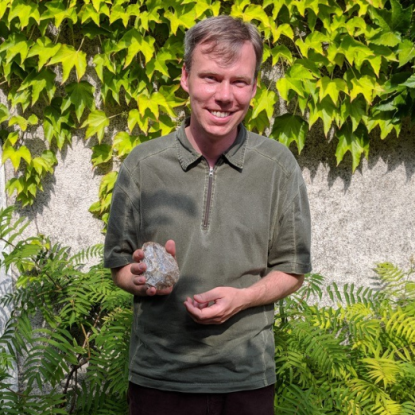As a paleobiologist, I work in a field that draws on biological and geological evidence to answer questions about the natural world and how it functions. I am especially interested in how mammal evolution has been impacted by environmental change through time and how we can use ancient organisms and ecosystems to better understand and predict the effects of modern climate change. The Northwest is a natural paleobiological laboratory, and besides using the region as a backdrop for teaching courses on ecology and evolution, I am working with undergraduate researchers to help understand the biological saga told by local fossils.
What can the fossil record reveal about the past evolution and ecology of mammals, and what can this tell us about the present and future? Can comparing modern and fossil species allow us to identify and reconstruct behavior in extinct animals? Can tracking morphological trends and environmental changes through time shed light on the forces that drive vertebrate evolution? These are the questions that motivate evolution in the MEAT (Morphology and Ecology Across Time) Lab. As a paleontologist, my primary source of data is the fossil record, but integrating these fossil data with modern comparative data is also an important part of my work. I am especially interested in rodents and carnivorans (the group of mammals that includes cats, dogs, mongooses, weasels, and their many relatives). A second interest of mine is the paleoecology of the Northwest, which has one of the most thoroughly studied paleoenvironmental records in the world, making it an ideal natural laboratory for studying the influence of environmental change on organisms and ecosystems through time.
Current Projects:
Body Size Evolution in Small Carnivorans – While large carnivores such as cats, hyenas, dogs, and bears are often intensively studied, small carnivores such as mongooses, civets, skunks, and weasels make up the bulk of carnivore biodiversity. Body size is an especially interesting trait in these species, and one that can be estimated for extinct species. There are multiple active projects focusing on body size in the lab, including building better models for estimating mass based on tooth measurements, using size to differentiate species of small carnivorans (particularly of the enigmatic, weasel-like cat relative Palaeogale), and tracing the evolution of carnivore sexual dimorphism through time. These projects are dependent mainly on museum-based work and the use of measurements and photos of both modern and extinct species.
Paleoenvironments of Marine Mammals – The Northwest Coast has one of the best records of fossil marine mammals in the world, including whales, pinnipeds, sea cows, otters, and the bizarre, extinct desmostylians and “oyster bear.” Understanding the environments in which these animals lived during the Oligocene and Miocene Epochs could tell us a great deal about how early members of these groups functioned and how they interacted with their environments and one another. The two main lines of research currently underway in the lab involve using geology and invertebrate paleontology to reconstruct the ancient environments of the Olympic Peninsula and Vancouver Island, an approach that involves both museum visits and fieldwork along the coast, and the functional morphology of living and extinct marine mammals, an approach that involves work in both paleontology and zoology collections in museums.
Paleoecology of the Inland Northwest – Spokane sits in the midst of one of the world’s most important regions for studying the gradual cooling of our planet from the Miocene Epoch onwards, the spread of grasslands across the world’s continents, and the impact of these changes on animal life. Multiple labs across the region are addressing questions related to this theme; our main contribution has been the study of a locality near Pendleton, Oregon that is an exceptionally clear window into a Miocene ecosystem. Our main ongoing project inspired by this site is focused on the evolution of burrowing in ground squirrels and the forces that drove some squirrels out of the trees and underground. I am hoping to return to the site again in the summer of 2025, which I’m sure will inspire many new student projects!

